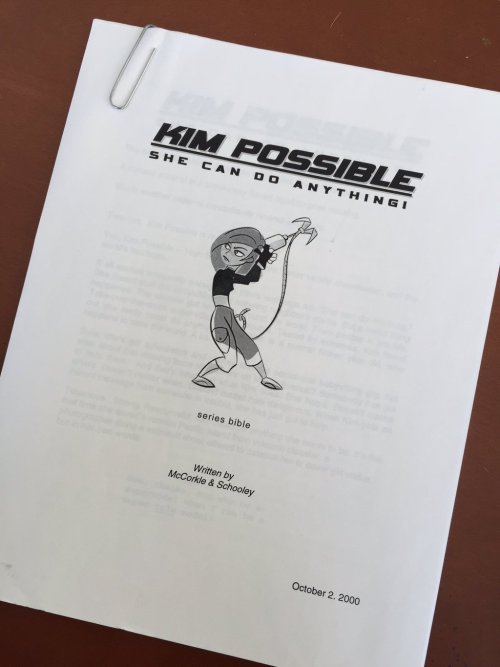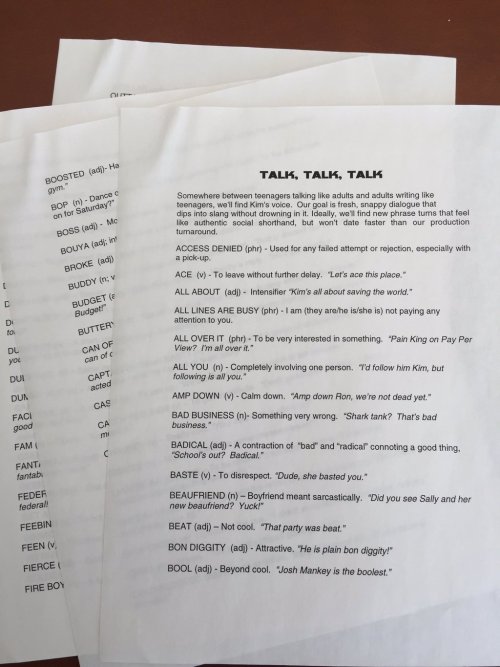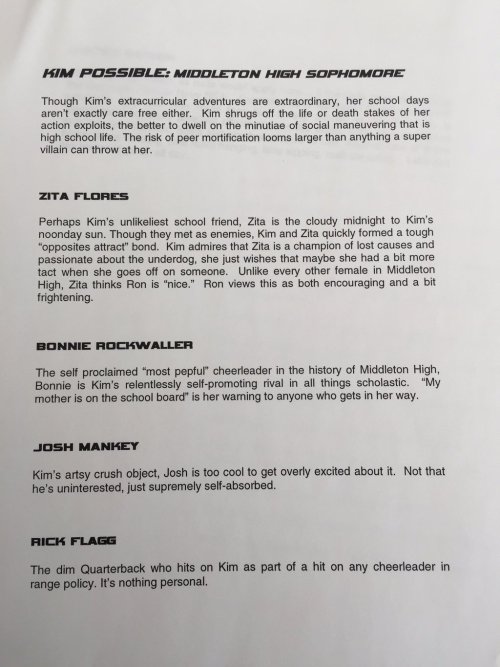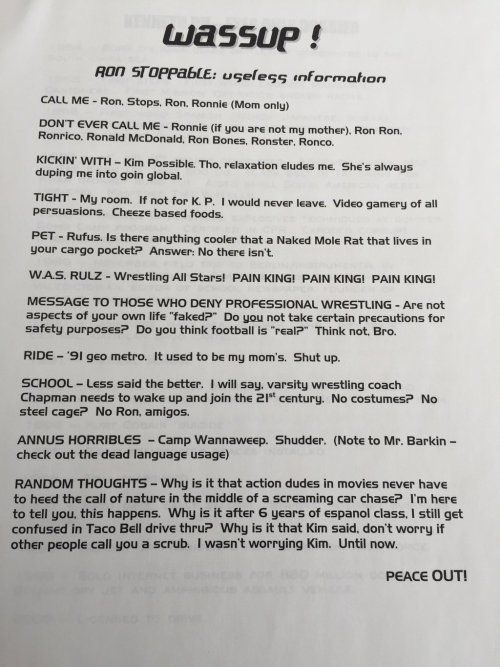Writing From Scratch #4
Writing from Scratch #4
The Milieu Plot
The problem of the milieu plot involves a problem of location or setting. The character is often either in a place they need/want to escape from or not in the specific place they need/want to be in. The try-fail cycles will involve traveling away from or to the location. Gulliver’s Travels, The Great Escape, and The Hobbit contain milieu plots.
The Lord of the Rings contains one very large milieu – the problem of getting the One Ring from the Shire where its been hidden for a number of years to Mordor where it can finally be destroyed. We can further break this down into smaller milieu plots. Let’s look at one: the problem of crossing the Misty Mountains. (And we’ll use the events as they occur in the movie, since more people have watched that than read the book)
Read More on WordPress
More Posts from Feralpaules and Others

Super helpful for writers to take a lot at as well.







For those who do not have Twitter, Bob Schooley posted a Kim Possible series bible on there today. This contains material on the basic outline for the series. This was made about two years before the first episode was aired. There is so many amazing things in here that ended up being changed or did not happen or appear in the show entirely. A must look for any hardcore KP Fan!
Story idea: the local Academy of Magic has an Archaeology Department. They have an ongoing feud with the Necromancy Department because necromancers keep stealing bones from the archaeological lab, and archaeologists keep interrupting necromancy rites to ask the undead about their funerary rites.
The two departments also keep arguing over which one of them has the highest count of “ooops-found-an-ancient-evil-thing-and-almost-destroyed-the-world”.
Spring Reading Reviews '16
This spring's list: NK Jemison, Rainbow Rowell, Stephen King, & Agatha Christie #amreading
Wow, it’s been a while since I’ve written anything here. I’ve been hard at work at my new novel, so apologies for my absences but really Sorry, Not Sorry. I have been reading though, and here are my thoughts on what I read this spring (March-May). Minor spoilers (nothing plot related) below for The Hundred Thousand Kingdoms by NK Jemison, Carry On by Rainbow Rowell, The Future of Life by Edward…
View On WordPress
Writing from Scratch #9
Complex Plots, Part 2: Modifying Plots
The second way we’ll try complicating a plot is through plot modifiers. This happens when a try-fail cycle not only furthers the solution of one plot-problem but spawns a new plot-problem. What these plots actually modify are the stakes. They can give far-off worst-case scenarios more immediacy, which is what the plot analysis we’ll be getting into today does. Or they can show clear examples of what’s at stake for more abstract cases (think of Gollum in The Lord of the Rings clarifies our fears for what could happen to Frodo).
How does this work? Let’s look back at the plot analysis I did for The Expanse, Season 1 Episode 2, “The Big Empty.” A brief recap:
The Background: The Knight, a small, rickety life-boat sized spaceship with 5 survivors is all that’s left of the Canterbury after an attack on the larger vessel.
The Problem: The Knight’s radio is dead.
Read more on WordPress

How do you do, fellow kids?
I have a homework assignment on color theory, and could really use your help! Do you have a minute to take a quick 7 question survey about the color in this picture? Follow the link: https://www.surveymonkey.com/r/ZYD7MDK
Writing from Scratch #8
Now that we have gone over the four simple plot-problems (1, 2, 3, 4) and how they are solved through try-fail cycles, we’ll take a look at how to make complex, compound, and compound-complex plots through the same devices as sentence creation.
The first way we’ll try complicating a plot is by making the solution of the first noted plot-problem dependent on the solution of a second plot-problem, which stands in for easy solution prevention. We’re typically going to use dependent plots to strengthen audience satisfaction when the character is finally able to succeed. Or, like in the case-study we’ll look at today, they can be used to draw what appeared to be disparate plots together in longer works.
Read more on WordPress
How I turned an idea into an outline
With NaNoWriMo around the corner, I thought I might show you how I plotted my novel.
This is the story structure I used:
0% inciting incident
0%-20% introduction in the world, ends with a point of no return
20% first plot point: the hero receives his marching orders
20%-50% response to the first plot point
35% first pinch point: reminder of the nature of the antagonistic force
50% midpoint: big fat plot twist that changes the hero’s AND reader’s experience
50%-80% attack: the stakes are higher now
65% second pinch point: again reminding the reader of the antagonistic forces at hand
80% second plot point: the final injection of new information into the story to give the hero everything she needs to become the primary catalyst in the story’s conclusion (no new information past this point)
80%-100% resolution + final conflict + return home

I didn’t make this up. I think it’s by Larry Brooks, if The Internet informs me correctly. Fun Fact: once you pay attention to it, you’ll see this structure everywhere. Just take a look at any Harry Potter book, for example.
These points are the “bones” of my story. Next, I decided what “flesh” to put on them.
I simply made a list of things I like to read about:
Books about books and libraries
Magic
Quirky characters
Intelligent, fast-paced and sometimes silly
So, I combined this list and the structure points into a story that makes sense. Because I don’t want to spoil my plot / I am still to shy about my wip, I will make up a new plot for this post, so I can show you.
0%: The hero does something magical without knowing how she did it. She discards it, because everybody knows it can’t have been real.
0%-20%: We see the daily life of the hero: she is unhappy because all she wants to do is read, but she is not allowed to. She reads in the dead of night and is punished for it by her evil stepcousin. She finds a book on magic.
20% It all clicks together: she can do magic!
20%-50% The daily life for the hero changes. Instead of reading all night, she practices magic. She now loves books even more. She has little victories over her evil stepcousin, but hasn’t won yet.
35% The evil stepcousin finds out that she can do magic and takes away the magic book.
50% She discovers she can do magic without the book.
50%-80% The hero is not the only one who is bullied by the evil stepcousin. Her younger cousin is a victim as well, and he doesn’t have magic to defend himself. The stakes are raised, this is bigger than herself now. The younger cousin also wants to read, so they have several bonding moments over reading.
65% The evil stepcousin hurts the younger cousin, he’s in a coma now.
80% The hero discovers the evil stepcousin could do all these evil things because he knows magic too.
80%-100% The hero confronts the evil stepcousin, fights him off, nearly loses but wins in the end. He gives up and releases his power over the younger cousin who wakes up from the coma.
It’s not the most genius plot ever, but I literally made this up in minutes. So can you! And imagine the genius plot you can come up with if you spend more than a few minutes on it.
Then I calculated how many scenes I need in which part of the story. My wip is a YA or 12+ book, so I want it to contain about 75,000 words in total. I want my scenes to be around 1,000 words long to keep it snappy, so I need 75 scenes.
Scene number 1 (0%) is the inciting incident, scene number 15 (20%) is the first plot point, scene number 26 (35%) is the first pinch point, scene number 37 (50%) is the midpoint, scene number 49 (65%) is the second pinch point, scene number 60 (80%) is the second plot point and scene 75 (100%) is the last scene.
Some sidenotes on the 1,000-word scenes:
That’s more of a vague rule of thumb than a strict rule. If your scene needs to be longer or shorter, make it longer or shorter of course. My wip has some 2,300-word scenes as well.
Having 1,000-word scenes does not mean I have 1,000-word chapters, that would be really short. I will divide my novel into chapters after I’m finished writing my first draft.
For NaNoWriMo, maybe you could write scenes of 1,667 words, so you do one scene per day. A 50,000-word novel has 30 scenes of 1,667 words. Inciting incident is at scene 1, first plot point at scene 6, first pinch point at scene 11, midpoint at scene 15, second pinch point at scene 20, second plot point at scene 24 and scene 30 is your last scene. That’s just an idea, you got to see what works for you.
Then I made up in one sentence what will happen in every scene. For example: “They meet the dragon and he sends them on a sidequest.” Now my outline consists of 75 one-sentence scenes. This way, I prevent the problem of the sagging middle and other pacing problems and I still get to surprise myself when writing.
From those one-sentence scenes, I flesh out every scene into a first draft, using the process I described in my post How I never have to face an empty page when I write.
And that’s my first draft! I hope everything is clear. Feel free to ask me questions if it isn’t.
I’m gonna tag a few people I admire, who I hope are interested. If you aren’t, feel free to ignore me, or message me to take you off my tag list. If you would like to be added to my writing advice tag list, let me know.
Keep reading
A Plea for Good Horror Movies
A Plea for Good Horror Movies
Puck and I watch a ridiculous amount of horror movies. New horror movie out in theaters? We’re there. Horror movie marathons at my house? It’s on. (more…)
View On WordPress
Writing from Scratch #7: The Event Plot
The Event Plot
The problem of an Event plot is a disruption to the status quo. The solution comes either from setting everything right again or adapting to the change. The Event plot is probably what most people think of when they think “what is a plot?” Any story that deals with a life-changing or world-changing event is an Event.
The first plot I analyzed, from The Expanse television series, is an Event plot. Let’s look at another: The Princess Diaries. As we did with Lord of the Rings, we’ll look at the movie rather than books because more people will be familiar with the movie (which is a damn shame).
The Event: Mia Thermopolis’s grandmother tells Mia that she is the princess of small European kingdom Genovia, and she must take the throne.
Read More on WordPress
-
 theferalcollection reblogged this · 4 years ago
theferalcollection reblogged this · 4 years ago -
 feralpaules reblogged this · 4 years ago
feralpaules reblogged this · 4 years ago -
 feralpaules reblogged this · 4 years ago
feralpaules reblogged this · 4 years ago -
 feralpaules reblogged this · 4 years ago
feralpaules reblogged this · 4 years ago -
 theferalcollection reblogged this · 4 years ago
theferalcollection reblogged this · 4 years ago -
 feralpaules reblogged this · 4 years ago
feralpaules reblogged this · 4 years ago
check out my main blog www.theferalcollection.wordpress.com and find fandoms and funstuff on www.theferalcollection.tumblr.com
103 posts